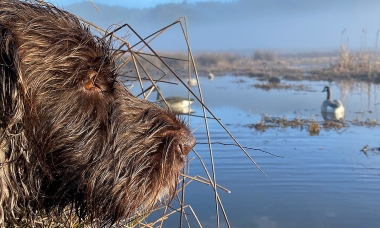
Search myodfw.com
Not sure what to do with a fishing rod even if you had one? Thought about hunting but getting started seems like an impossible task? Then let us help you. During ODFW's hands-on workshops and family fishing events we will provide the instruction and gear you'll need to actually catch a fish or shoot a pheasant. Other classes will help you navigate the controlled hunt process, or show you what equipment you'll need to hunt or fish. ODFW offers many classes and workshops throughout the year. View and register for an upcoming event in our new Volunteer and Event Management


Spring turkey hunting is about appealing to a tom’s urge to mate. Fall hunting, on the other hand, is about keying in on a flock’s daily routine. Look for a lone bird As fall turkey flocks become established, there’s a pecking order in each group. It’s not uncommon for a lone bird – usually a jake or young tom – to be wandering by himself looking for a flock to join. If you spot a lone bird, waste no time trying to get in front of him to set up and call. Don’t intimidate the lone bird with aggressive calling

Serial poacher sentenced to jail time, $22,000 fines in Grant County
CANYON CITY, Ore.- A poacher investigated for more than 50 crimes committed in Grant County between 2023 and 2024 was sentenced to 95 days behind bars and more than $22,000 in restitution and fines, according to wildlife officials. In what wildlife enforcement officers refer to as a serial poaching…
Oregon requires all hunters under the age of 18 to complete a hunter safety education course before hunting in the state. Upon course completion, students will receive a temporary Hunter Safety certification card to be carried while hunting in Oregon until a permanent card is received in the mail to replace it. Hunters over 18 are encouraged to take the online education course, as it may be required for out of state hunts. Note: Youth under the age of 9 may struggle with the course material and may not have the physical strength needed to safely handle a firearm during
Gnat Creek Hatchery was constructed in 1960 as part of the Columbia River Fisheries Development Program (Mitchell Act)—a program to enhance declining fish runs in the Columbia River Basin. The facility is used for egg incubation and rearing of spring Chinook and winter steelhead. Most of the production is released off-station. The hatchery is an easy drive toward Oregon’s coast on Highway 30 and a visitor-friendly place for the entire family. With lots to do, located on beautiful Gnat Creek and tucked away amid the rainforest, this is a worthwhile stop on the way to the coast.
The Northern flying squirrel is the smallest arboreal squirrel in Oregon. It is typically squirrel-like except that the fore- and hind legs are connected by a furred patagium that extends from the ankle to the wrist. It is lead colored with buffy brown to brown tips. It occurs in forested areas west of the Cascade Range and eastward to near Lakeview, Lake County and Paulina Lake, Deschutes County. The species also occurs in the Blue, Ochoco, and Wallowa mountains. Northern flying squirrels are mostly nocturnal although individuals may be observed abroad during light hours on rare occasions. They are usually
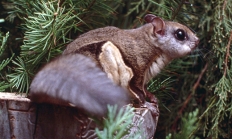
When a turkey is shot in the head with a shotgun, death is usually instant. However, a turkey may flop on the ground for several seconds, even up to a minute, after it’s “dead.” In this case, the turkey isn’t going anywhere so simply wait for it to go still. If the bird is wounded and laying with its head up, you may need to shoot it again – in the head with a shotgun, or in the spine or vitals with an arrow. Don’t try to ring the neck of a bird that’s still alive but not going anywhere


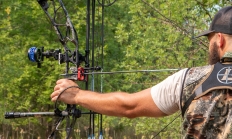
Features: During the fall, winter and spring months, males can be quickly identified by their distinctive iridescent green heads. Females are mottled-brown, with a dark brown stripe through each eye, an orange bill with black splotching and have orange legs. Immature ducks resemble adult females until the males develop more colorful plumage in early fall. After breeding season, males develop duller eclipse plumage beginning in June and resemble hens until mid-September. Wings of both sexes have a violet-blue speculum bordered in front and behind by a pronounced white stripe. Habitat: Mallards are the most common breeding and wintering duck in

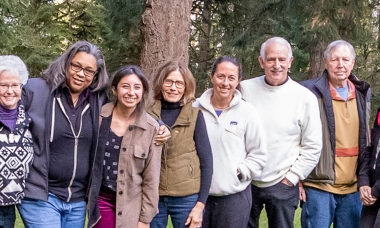
This 141-acre property along both sides of the Yachats River was first purchased in the early 1980s to provide forage for elk and help alleviate elk damage to surrounding agricultural land. It also provides public access to the Siuslaw National Forest along the Yachats River Highway, where there are few public access points.
Turkeys don’t like to fly at night, so the best time to get set up for your hunt is either right before dark the day before your hunt. Or before daylight the day of your hunt. Once you ’ve located a tom, either seeing it or by hearing it gobble, it’s time to make a plan. The goal is to get close enough to call in a tom, without letting him know you’re there. Be in place before daylight If you’ve been out the night before and used a locator call to find a tom on his roost, get to
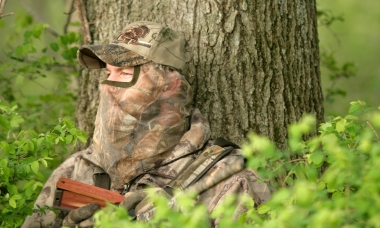
The pelage of this mouse is grayish or brownish dorsally, the venter hairs are white with lead-colored bases, and the tail is light colored. In Oregon, it occurs within the area circumscribed by a line connecting Denio Nevada; Fort Rock, Lake County; Powell Butte, Crook County; Malheur National Wildlife headquarters, Harney County; and Burns Junction, Malheur County. On a daily basis, activity begins with an intense burst during the first light to hours after sunset, and declines to almost nil six hours after sunset, then, especially in summer, increases again before sunrise. The Dark Kangaroo Mouse constructs elaborate nests with

Build bird houses for ODFW. Teach families to fish. Walk a stream or hike in a forest looking for animals or sign of animals to support various studies. Teach others to hunt or about hunter safety. Assist Marine Reserves with onshore or offshore studies. These are just some of the things ODFW volunteers do to help protect and enhance Oregon's natural resources. Current volunteer opportunities


Clackamas Hatchery began operation in 1979 and is used for adult collection, egg incubation and rearing of spring Chinook and winter steelhead, rearing of coho and acclimation of summer steelhead.
The bobcat is the smallest wild felid in Oregon, with females being considerably smaller than males. The bobcat is about twice the size of a domestic cat, but its legs are longer, its tail is shorter, and its body is more muscular and compact. The feet are relatively small and the bobcat is not well adapted to negotiate deep snow. In general, the variously spotted pelage is yellowish with grayish overtones in winter and with reddish overtones in summer, reflecting the two annual molts. The ears are black with a large white spot and are equipped with short black tufts

